'Is the miserable weather making your pet gloomy? Maybe your pooch has SAD.'
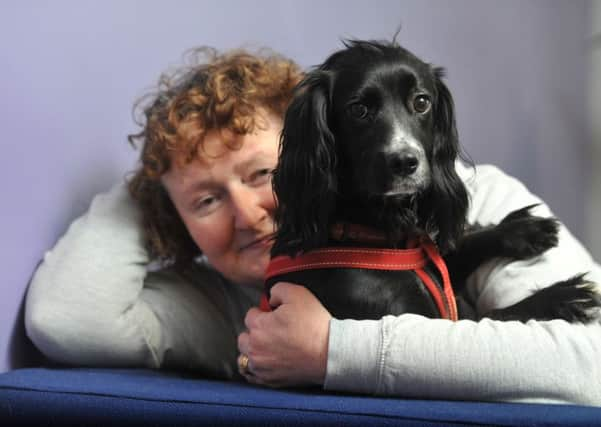

ANIMALS can take on the characteristics of humans and often share the same experiences and emotions as their owners.
Most animals and humans are affected to some extent by changes in light and the seasons and tend to eat comfort food and feel more lethargic in winter.
Advertisement
Hide AdAdvertisement
Hide AdAnd it seems animals can be just as susceptible to the depressive illness Seasonal Affective Disorder (SAD).
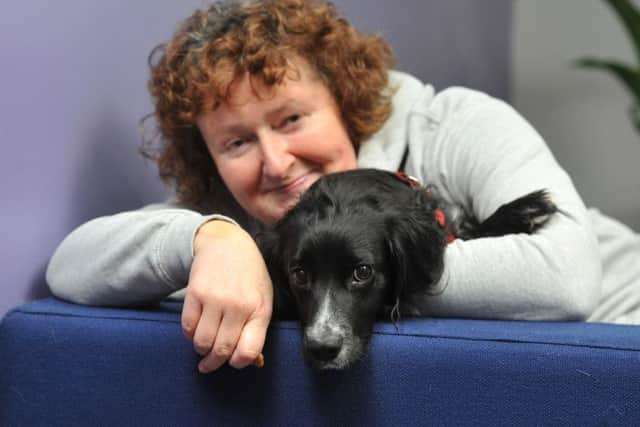

Jackie Hough, assistant head of animal studies for further education and a lecturer in animal behaviour for degree students at Myerscough College, near Preston, says she believes animals, particularly dogs, are very tuned into humans and can share the same issues.
She explains: “People can feel down at this time of the year even if they don’t suffer from SAD.
“I hate the dark days myself as you go to work in the dark and go home in the dark and the days seem more compressed.
Advertisement
Hide AdAdvertisement
Hide Ad“It has a negative effect on anyone’s mood but for SAD sufferers, it is much worse.
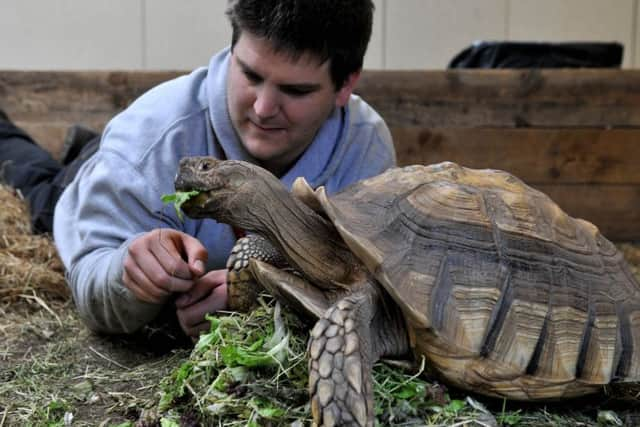

“Some people believe their animals are more depressed in the winter months and think they have the animal equivalent of SAD.
“If you consider dogs from an evolutionary perspective and look at wolf packs, they communicate with each other through body language.
“Domestic dogs live in our households and are always watching and observing us.
Advertisement
Hide AdAdvertisement
Hide Ad“Research studies show that if you point towards food on the floor or point at the biscuit tin, dogs will understand as their communication is very body language based.
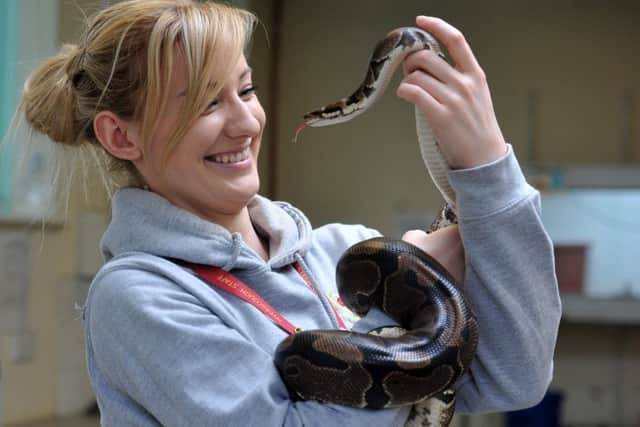

“If a person suffers from winter blues or has SAD, dogs will notice and pick up on their body language.
“Dogs may notice that their owner has mood swings, isn’t happy and doesn’t fancy going out for walks the same.
“Dogs pick up on our subtle signals and if someone goes home feeling grumpy, their dog will notice that.
Advertisement
Hide AdAdvertisement
Hide Ad“My take on SAD and animals is that our pets, such as dogs, are very tuned in to our feelings so if we feel angry, grumpy or moody, they will pick up on that and adjust their own behaviour accordingly.


“It may not necessarily be that a dog is suffering from SAD but that they are so tuned in to us that our emotions can have a domino effect on their own behaviour.”
Jackie has heard of dogs, cats and horses showing signs of SAD and says lighting is also important when it comes to reptiles.
She says: “The importance of lighting in all species is important and UV rays are very important for different species of reptiles.
Advertisement
Hide AdAdvertisement
Hide Ad“If reptiles don’t get the right UV rays and the right amount of daylight length for them, it will affect their behaviour and ultimately their health.
“Similarly, some birds migrate and choose to fly to sunnier climes when the temperature is not suitable for them while other animals, such as tortoises hibernate.”
Jackie explains that both animals and humans produce the hormone melatonin which is processed more in the dark.
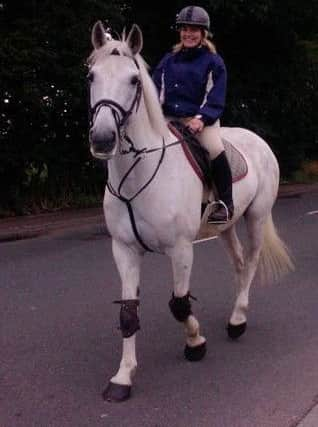

She says: “Melatonin makes people feel relaxed, sleepy and lethargic so if a person – or animal – produces more melatonin, it is going to increase these feelings.”
Advertisement
Hide AdAdvertisement
Hide AdJackie says that the reproduction cycle of horses is even dictated by the longer days.
“Horses start to cycle when the long days come and like to breed when they know the conditions are optimal for the foal to be born.
“I certainly know that quite a few people have used lights on their horses, particularly from a reproductive point of view into trying to trick the horse into believing the long days have come.
“I think the fact that some animals display behaviour linked to SAD symptoms shows that animals are always observing our behaviour.
Advertisement
Hide AdAdvertisement
Hide Ad“It is a good example of the human and animal bond and how we are intertwined.”
DONNA AND MURPHY’S STORY
WHEN Donna Cumia acquired her horse Murphy – labelled as “dangerous and impossible” by a previous owner – she did wonder if she had bitten off more than she could chew.
Murphy was incredibly bad-tempered and stressed and hated to be left alone and when Donna went out riding on him, he refused to venture far from home.
It was only after a few years that Donna made the connection that Murphy’s temperamental behaviour seemed to be linked to winter time.
Advertisement
Hide AdAdvertisement
Hide AdDonna, 45, of Banks, near Preston, recalls: “During the summer, Murphy was lovely and we would be out all day and his temperament would be fine.
“But in the winter, he would get very anxious in the stable and was very withdrawn.
“Murphy’s bottom lip would flap and he would get very upset and wouldn’t like going out on his own.
“If I tried riding him in winter, he would not be happy to go far from home and we would get to the end of the road and he would plant his feet into the ground and not want to continue any further.”
Advertisement
Hide AdAdvertisement
Hide AdDonna, who works as an administrator at The Sad Light Hire Company in Southport, put two and two together and wondered if Murphy would benefit from light therapy.
She got a high powered lightbox and put it in his stable and started using it on Murphy every day.
Murphy’s behaviour was suddenly transformed. Donna explains: “Murphy became like a different horse.
“From being a horse I would just ride at home, we started going out and competing in showjumping contests.
Advertisement
Hide AdAdvertisement
Hide Ad“This has continued and light therapy is now part of stable life.
“I have eight horses and we have the lightbox where the horses are groomed so they are all exposed to the light for about an hour a day and it works wonders.
“Light therapy has become an integral part of my routine with my horses and I would not be without it now.”
Donna’s niece Chantelle Bryan, 30, also tried a lightbox on her horse Sapphire after it suffered an injury.
Advertisement
Hide AdAdvertisement
Hide AdDonna explains: “My niece’s horse had hurt its foot and wasn’t allowed out of the stable for a few weeks while it healed.
“However, her horse was getting upset and instead of resting its foot, it was pacing around the stable and getting agitated.
“I suggested she try my lightbox for a few weeks to see if it would help.
“Over the next week, she saw a big change and her horse relaxed, stopped its chronic pacing and allowed its foot to heal.”
Advertisement
Hide AdAdvertisement
Hide AdThrough her own experience and her work at the Sad Light Hire Company, Donna firmly believes animals are just as susceptible to SAD in the winter as humans.
And although she hasn’t suffered from SAD herself, she says she uses the lightboxes in winter and feels they give her an energy boost.
Donna, who is married to Juan and has son Sam, 26, daughter Paloma, 24, and daughter Bella, three, says: “At home, I am outside most of the time so don’t need a lightbox.
“But when I am in the office, I use lightboxes and have really noticed the difference.
Advertisement
Hide AdAdvertisement
Hide Ad“I am always buzzing and despite me being a very busy person, people often comment on how I never seem tired and how I have a lot of energy.
“I put this down to the lightboxes.
“Through working at the Sad Light Hire shop, I have always encouraged my children to use light therapy, especially through stressful exam times to give them more energy.”
Donna, who has always had horses and whose mother was a show jumper, explains light plays a massive part in the breeding of horses.
She explains: “In the racing industry, it is very important the foals are born at a certain time of year so females are artificially brought into season by putting them into a lit stable to make them think the longer days are here.
Advertisement
Hide AdAdvertisement
Hide Ad“Knowing this made me look into the issue a bit more and I found that academic research had been carried out which showed horses do seem to suffer from SAD. It makes sense as horses are outdoor animals and you see them out in the sunshine living in herds and they seem very relaxed and happy.
“So when you then put them in a stable surrounding, that in itself can upset the horse.
“Put that together with a lack of natural sunlight and the horse can become very stressed.
“My advice to anyone who has a problematic horse in winter is to try light therapy if they think it is affected by the seasons.
Advertisement
Hide AdAdvertisement
Hide Ad“Some people think light therapy and SAD in animals sounds a load of rubbish, but when you look into it and understand what is happening in the brain of animals and humans, it really does make sense.
“I think it is an area which can be explored further. I believe there is the potential to use light therapy to improve stamina and performance of horses in competitions.”